In Hindu tradition, Triveni Sangam is the confluence of three rivers. Sangam is the Sanskrit word for confluence. The point of confluence is a sacred place for Hindus. A bath here is said to flush away all of one’s sins and free one from the cycle of rebirth. The Triveni Sangam in Prayagraj (Allahabad) is the confluence of two physical rivers Ganga, Yamuna, and the subterranean mystic Saraswati River.
The rivers maintain their identity and are visibly different as they merge. While the Yamuna is deep, calm, and greenish in colour, the Ganga is shallow, forceful, and clear. The Saraswati remains hidden, but the faithful believe that she makes her presence felt underwater. At the confluence of these two great Indian rivers, where the invisible Saraswati conjoins them, Hindu pilgrims take boats to bathe from platforms erected at the confluence.
The migration of seagulls to the subcontinent, particularly to areas like Prayagraj, during the months of October to March, holds significance within the local ecology and beliefs. They feed on whatever is made available by the rivers and the pilgrims, as also the boats cruising by.
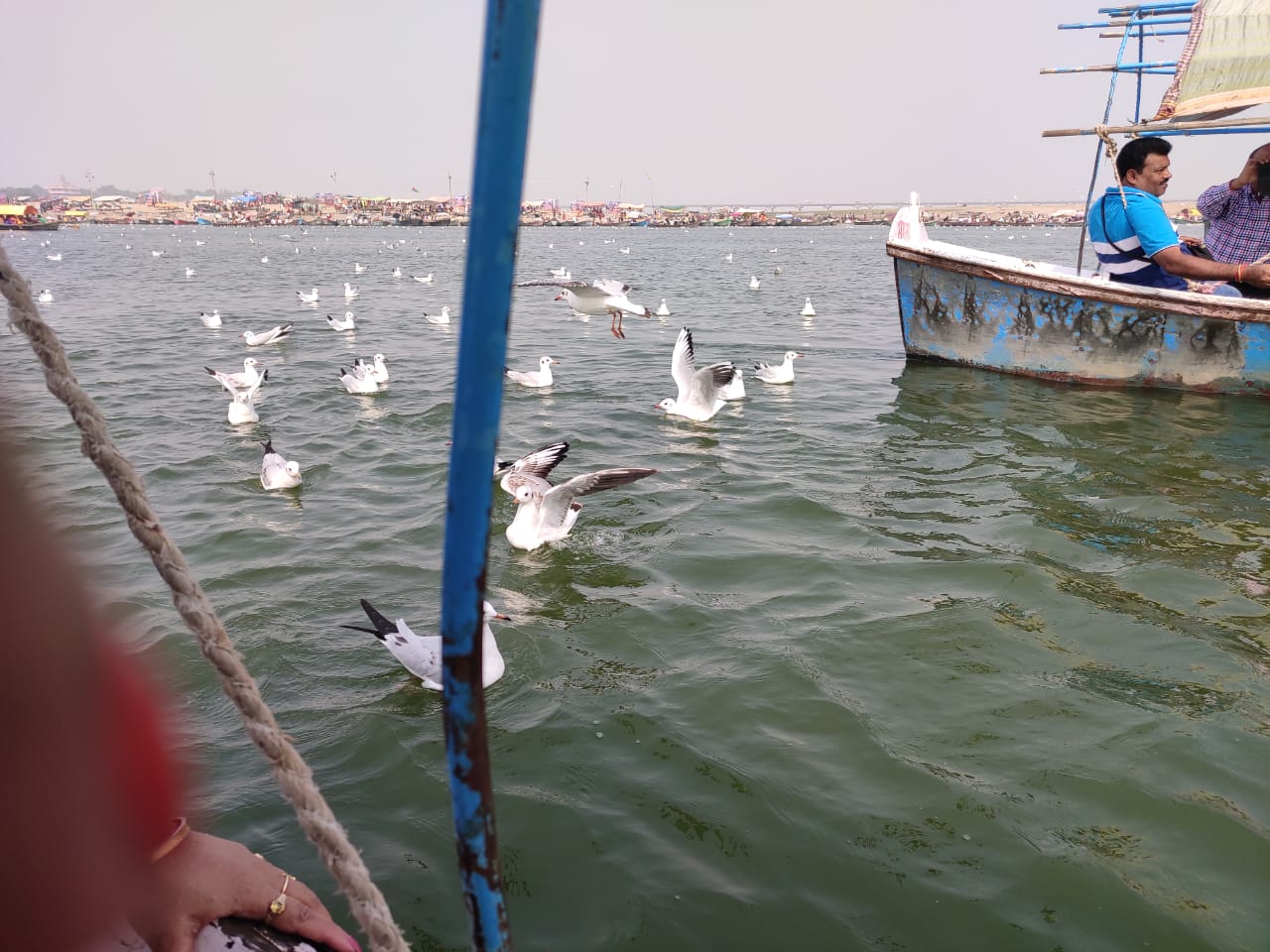
Seagulls migrating to regions like Prayagraj, which lies in the Indian subcontinent, can be attributed to the bird’s natural instinct to escape harsh winters in their native habitats. These migratory patterns are observed globally among various bird species seeking warmer climates during colder seasons.
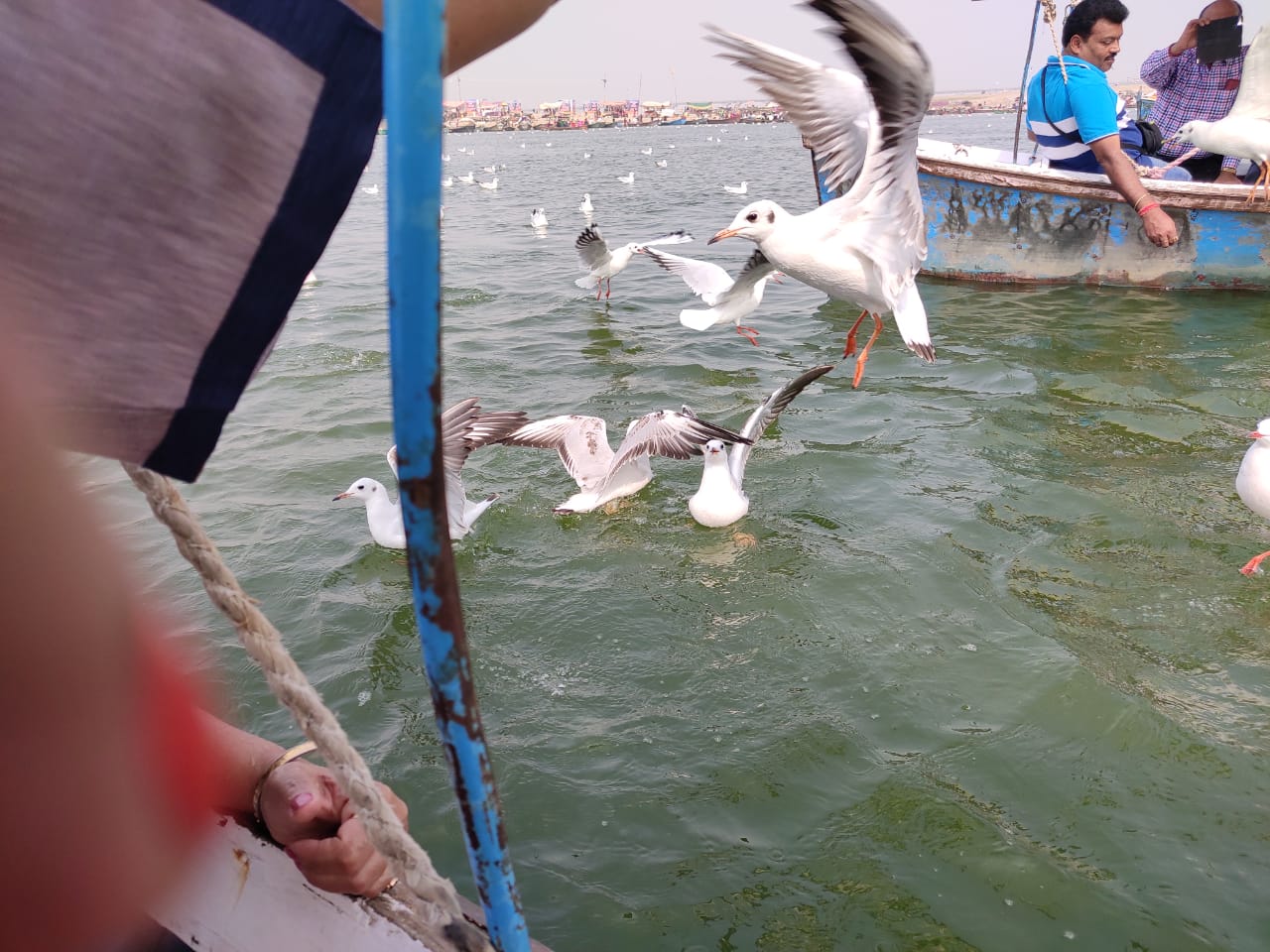
The arrival of annual visitors — the Siberian gull (Larus fuscus heuglini) — at the Triveni Sangam in Allahabad heralds the onset of winter. With the onset of winter, these Siberian birds spread their wings to take a flight of thousands of kilometres all the way from Siberia via Afghanistan, Mongolia and Tibet crossing high Himalayan mountains.
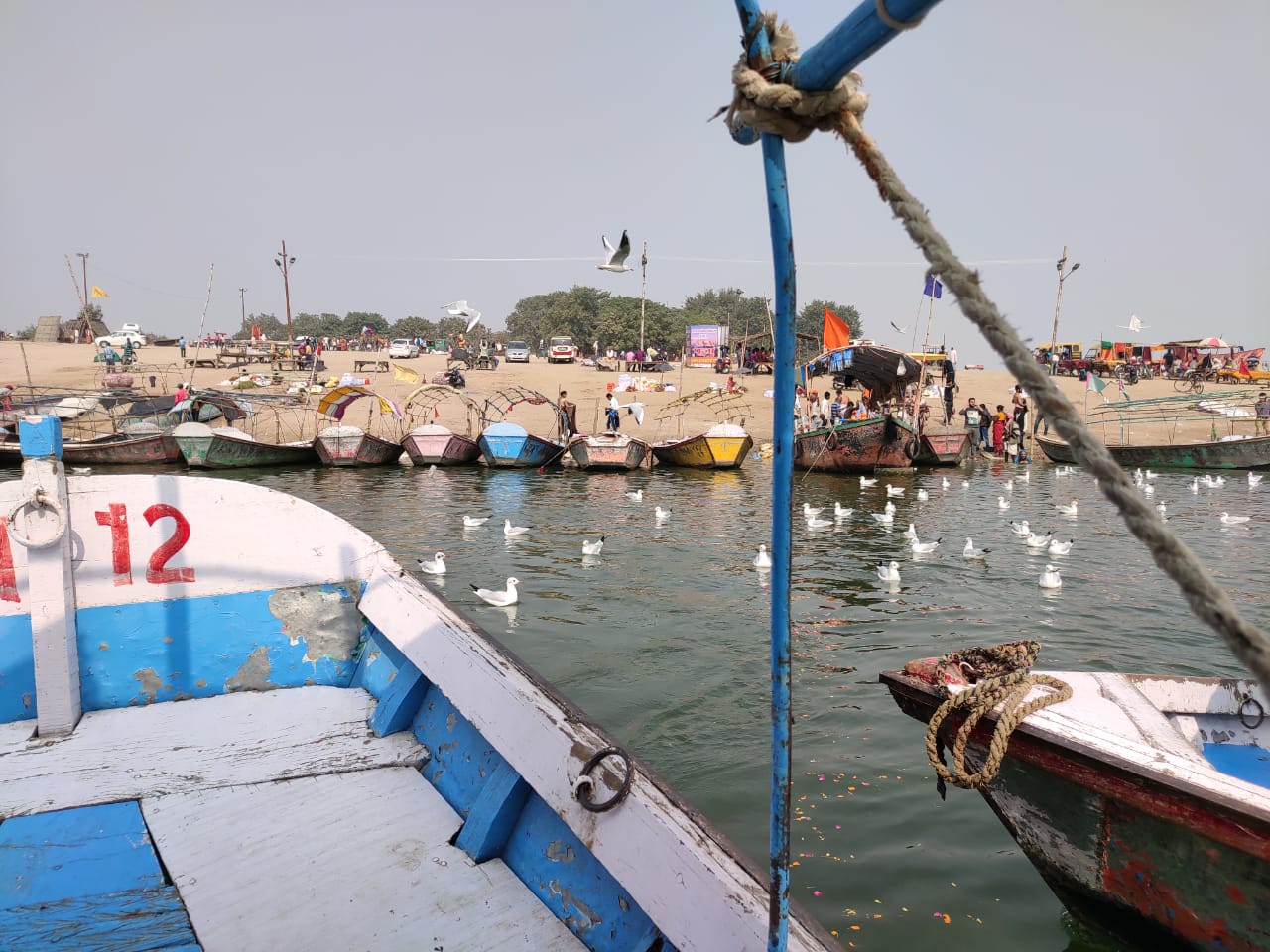
These Siberian birds present a mesmerising view at the Sangam throughout the winter season as if waiting to take a holy dip along with the lakhs of pilgrims who arrive here especially during the month of January for the month-long Magh Mela. Bobbing up and down along with the ripples in the calm waters, these Siberian birds are an added attraction for the pilgrims and tourists thronging here during the winter months.
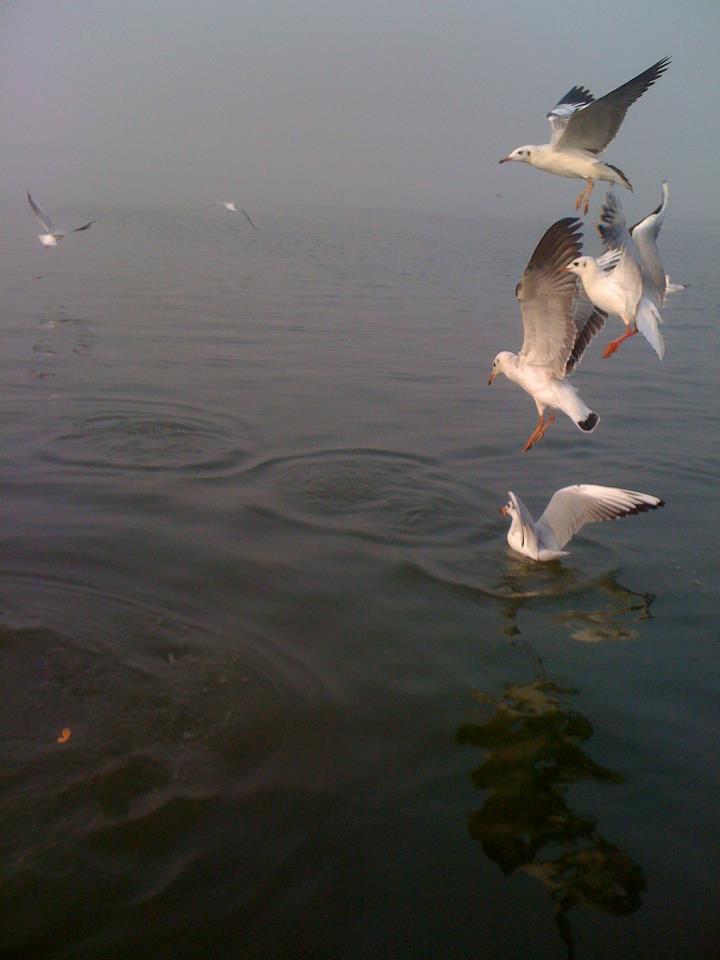
These birds are human-friendly and can be seen sitting on boats also occupied by the pilgrims and tourists.
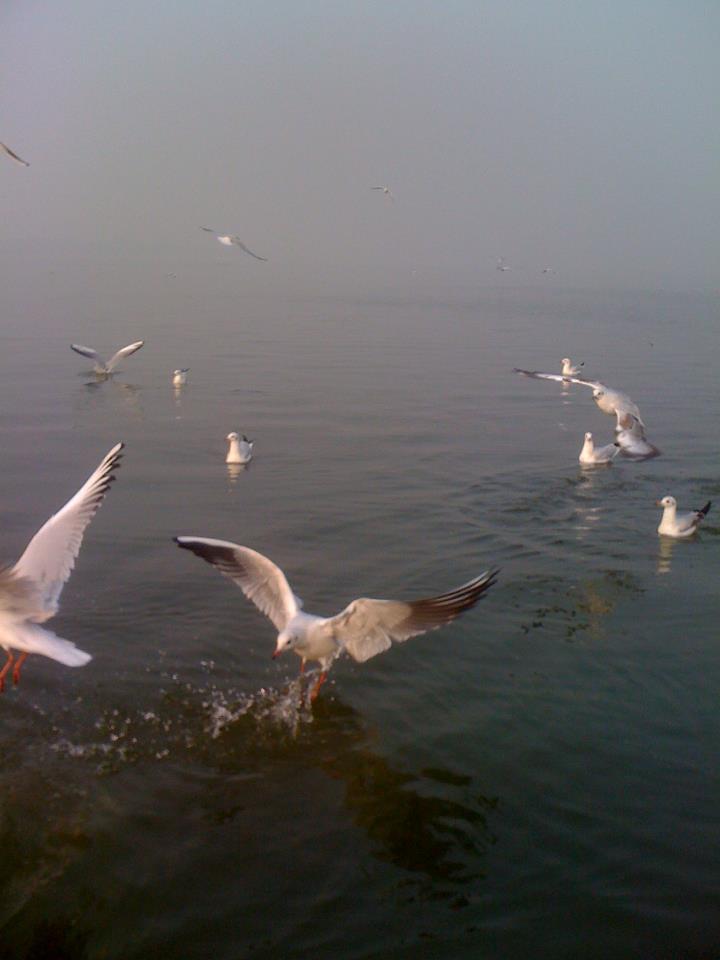
The whiteness of the birds dazzles on the waters of Ganga and Yamuna. These Siberian birds present a mesmerizing view at the Sangam throughout the winter season as if waiting to take a holy dip along with the pilgrims.
These birds map their route of arrival like a magnetic compass needle and would follow the exact flyway on their way back home. Migrating birds navigate using celestial cues from the sun and stars, the earth’s magnetic field, and probably also mental maps.
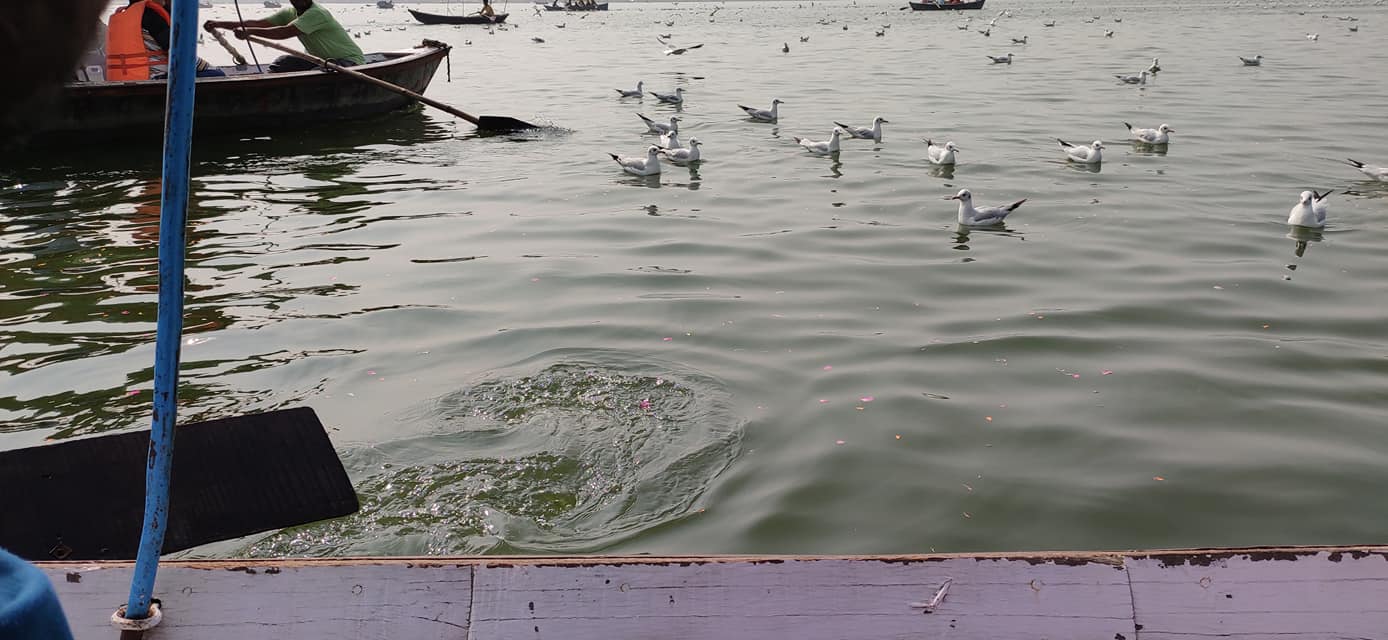
A surprising behaviour has been noticed in the migration of these birds. The young ones guide thousands of migratory birds to the holy city of Allahabad every year. But when they fly back, the female birds lead the entire flock. Nothing concrete has yet been discovered as to what guides the young ones to such far-off places even when it is their first trip to an unknown place.
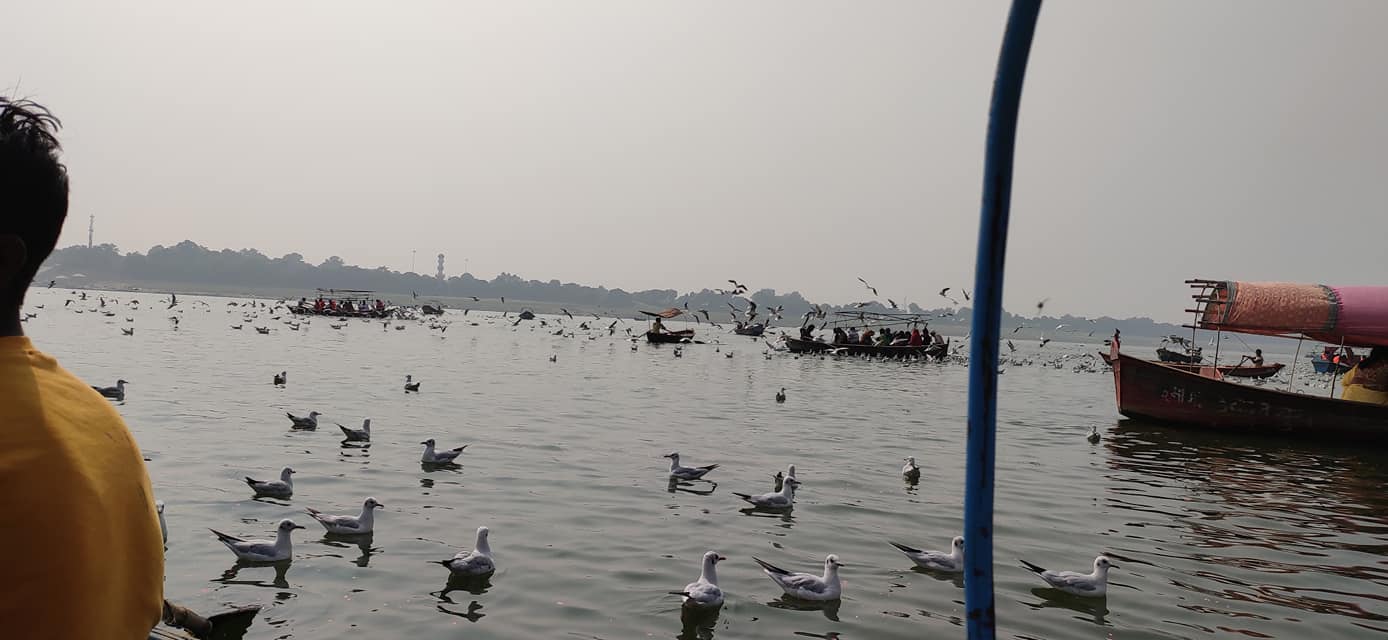
Their migration cycle, lasting about six months, holds valuable lessons for humans.
- Of endurance — a journey of thousands of kilometres in which lives are lost, the dead are grieved and the journey is continued.
- Of community feeling — without which such journeys cannot be accomplished.
- Of coexistence — whereby the native and migrant species live side-by-side.
The presence of migrating seagulls in Prayagraj during the mentioned months is likely to be perceived not only as a natural phenomenon but also as a part of the cultural and spiritual fabric of the local community, intertwining ecology with beliefs and traditions.


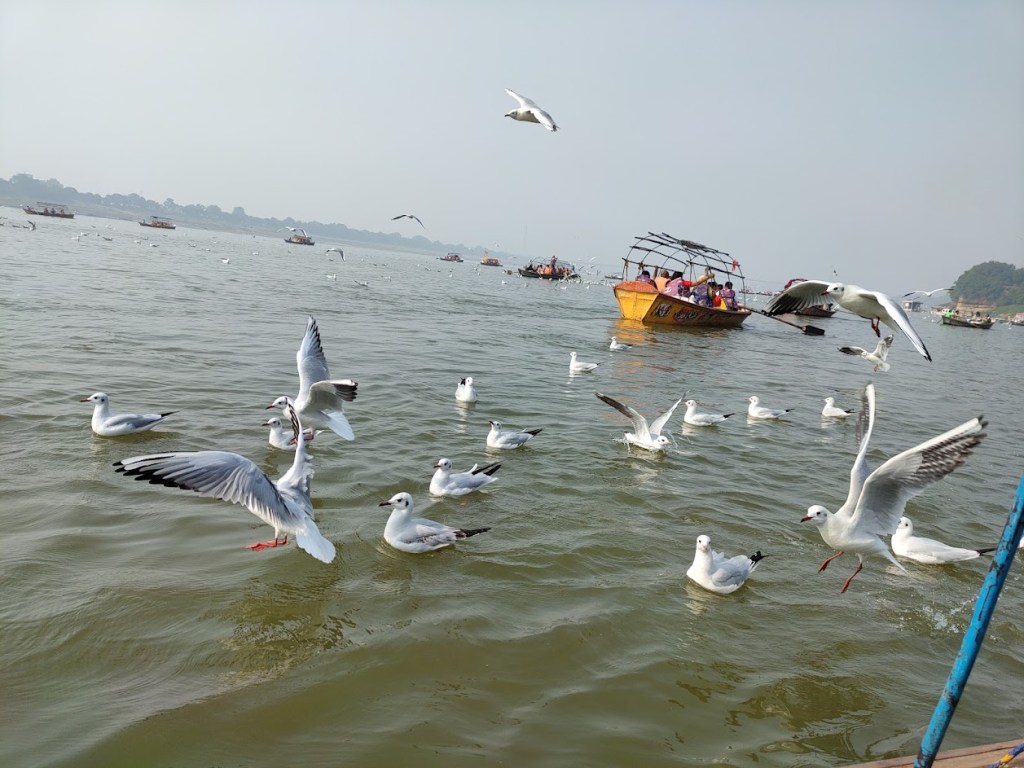
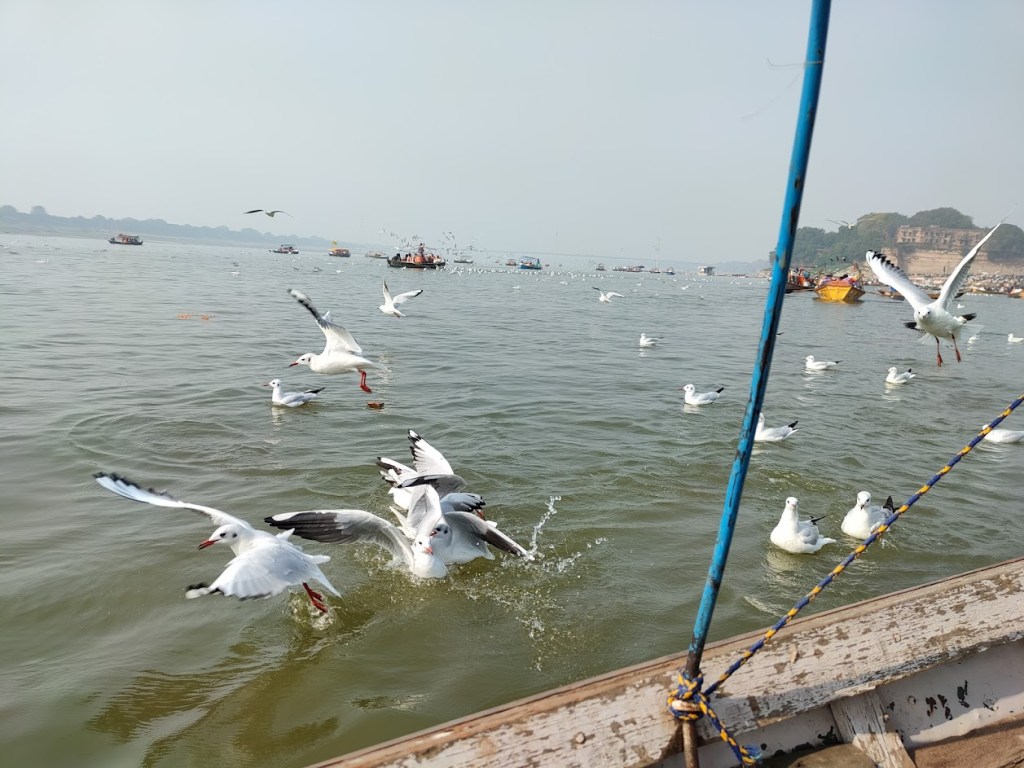
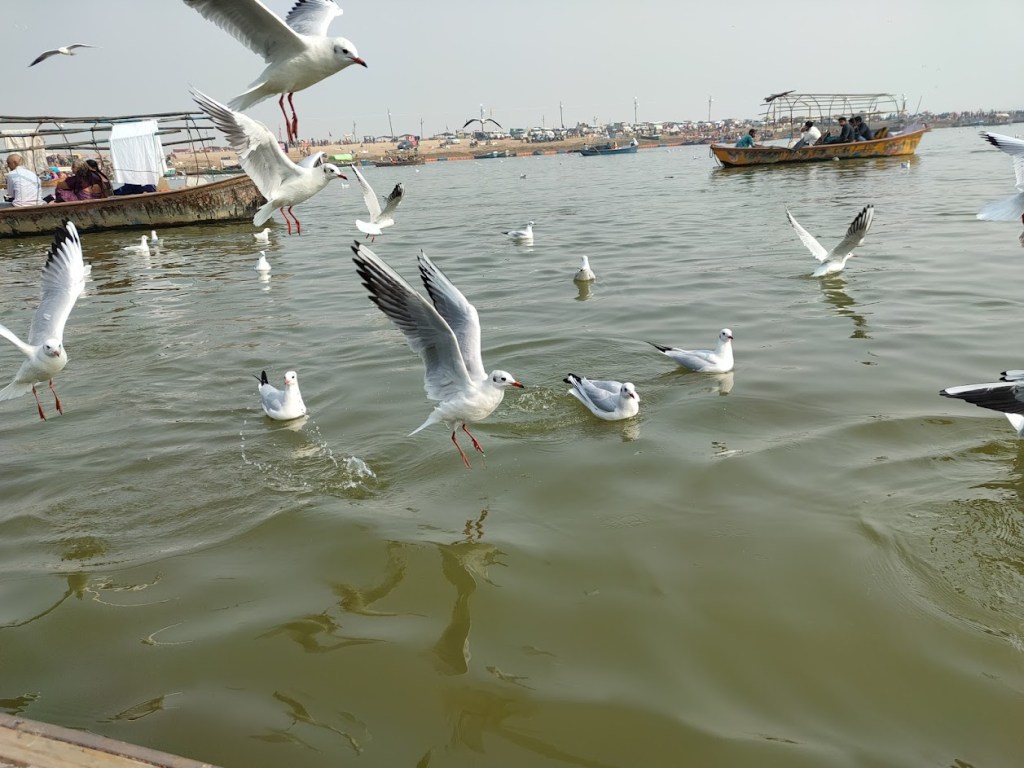
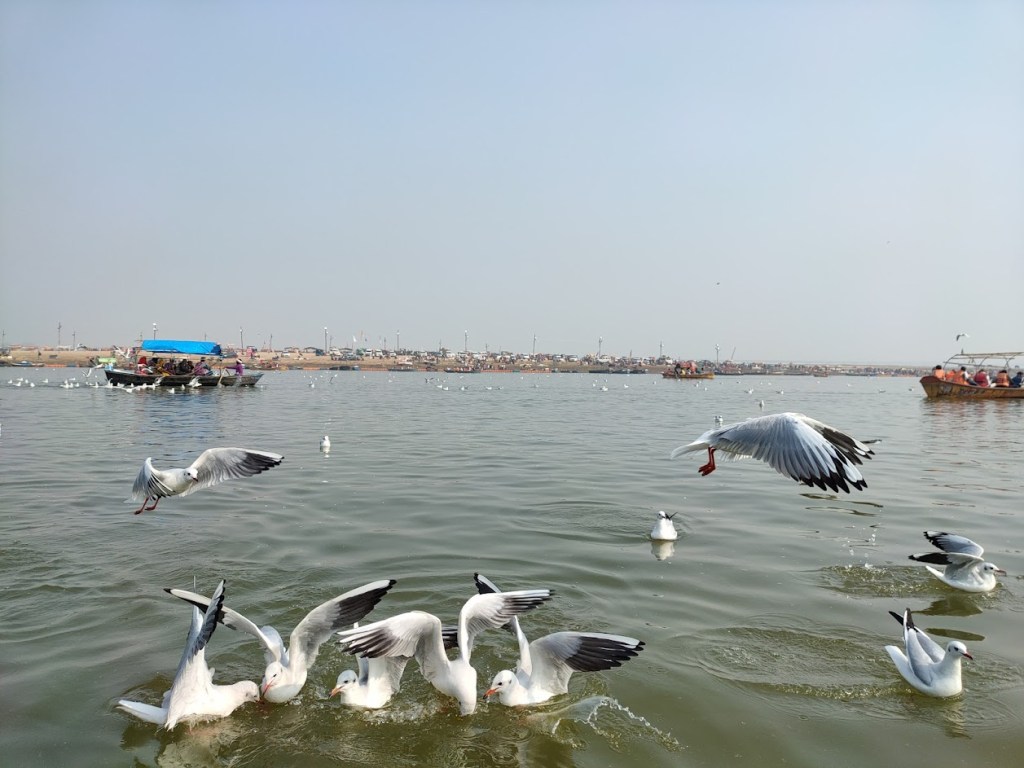
Beautiful captures and lovely video!
LikeLiked by 2 people
Thank you!
LikeLike
Other than humans, all other creatures have extra-sensory perception. It is simply amazing to see these birds fly thousands of kilometers to arrive at their chosen spot. I read somewhere that they fly high above the Himalayas non-stop till they reach a valley in the sub-continent.
Good read, as usual. Keep them coming…
LikeLiked by 2 people
Thanks Aro. 🙂
I read in a BBC article that George Lowe, the New Zealand born climber who supported Edmund Hillary and Tenzing Norgay’s ascent in 1953, said he had seen the geese flying over the top of Mount Everest – the peak is approximately 29,000ft. That’s really amazing!
LikeLiked by 3 people
beautiful!
LikeLiked by 2 people
Thank you!
LikeLike
Our life should be like these birds…
LikeLiked by 2 people
You said my words, Bhaskar. I really wish if we could be like these birds. 🙂
LikeLiked by 1 person
Beautiful pics. Visited the place long time back.
LikeLiked by 2 people
Thank you.
LikeLike
Wonderful video. Such skilful fliers and swimmers. Are these migratory cranes the same as seagulls?
LikeLiked by 2 people
Thanks Somali. These are Siberian gulls, also known as Heuglin’s Gull.
LikeLiked by 1 person
Beautiful Pictures.. Seems even the birds plan their itinerary before they migrate. Interesting observation on their navigation skills, obviously all gifted by nature. It would be indeed a remarkable discovery on our account to actually decode this. Nice read… 🙂
LikeLiked by 1 person
Thanks Rajat. Yes, migration of birds is amazing!
LikeLiked by 1 person
Excellent video and photos of birds are also very nice.
LikeLiked by 2 people
Thanks a lot!
LikeLike
Interesting observation at the end; about the female leading the flock back. Great pictures. Man’s pursuit of washing away sins continues eternal, like the Ganga 🙂
LikeLiked by 2 people
Thanks sir.
LikeLike
Wonderful post. This blog has an amazing information about the destination places beautiful visiting spots and captures very impressive photos.
LikeLiked by 1 person
Thanks, Chitra.
LikeLike
Almost like an annual pilgrimage of these birds… I have seen them in Varanasi too!
LikeLiked by 1 person
Nice pic and nice Blog..
Thanks for sharing..
LikeLiked by 1 person
Thanks, sir.
LikeLike